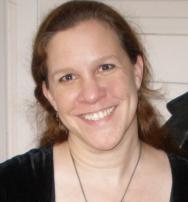Observe the activity on the average golf course, and you’ll note that the sport has an image problem among young people: the number of youthful players is dwindling, and it’s not hard to imagine that this will spell trouble for the golf industry in a short few years as its biggest enthusiasts become too elderly to play. Golf has a reputation for being slow, difficult, stodgy and boring. So how can the sport transform itself into something less stuffy and more fun and accessible for everyone?
Enter the “Hack Golf” movement, a one-year-old group that describes itself as an “open-innovation initiative aimed at crowdsourcing the future of the game.” The movement is seeking input from the public regarding how golf can be improved: what are the most significant frustration factors in golf, the members are asked, and what are your best, most creative ideas for addressing these? The group is currently engaged in Phase 1 of its mission, which is to develop and publish a definitive list of the game’s biggest barriers by April of this year.
Web site participants have brainstormed thousands of ideas for improving the game, from attracting a younger audience to making it easier for beginners.
“Lack of proficiency in hitting the standard golf ball’ is the overwhelming problem for growing the golf game,” wrote one Hack Golf member, Duane Peterson. “Beginning golfers become frustrated with the difficulty to hit the ball well and quickly lose interest. As a result we lose too many potential golfers in the beginning, from a poor golfing experience.”
Peterson’s idea is a change of golf balls. “Consider the new Hy-performance Hybrid Golf Ball, DTW (distance-to-weight) adjusted for EZ-Play and Practice on shorter golf facilities,” he suggested. “Reduces the long learning curve, makes golf fun and keeps more people in the game.”
Moving to 15-inch cups on golf courses is an idea that many golf courses are already embracing. The goal, proponents say, is to make the sport easier. Foot golf, where a ball is kicked into holes throughout the course, is another possibility.
Other posters to the forum suggested that golf’s perceived stiff formality is keeping some people away.
“Dress codes are keeping people from playing golf,” wrote one poster. “Blue jeans are everywhere in our society. Could you imagine if Disney World, or other major attraction, had a no blue jeans and must wear a collared shirt policy?”
Once the group collects a critical mass of barriers and suggested fixes, it will move onto Phase 3b, “exploring the future.”
“Leveraging our experience, knowledge and real world work in 2015, we’ll ask the community: How will we turn the new round of our most promising golf ‘hacks’ into real-world prototypes and experiments, and how will the community support them differently?” asked the group’s organizers.
While there is some resistance to the movement by golf traditionalists, the movement has its share of prominent supporters, as well, including former PGA of America president Ted Bishop. Bishop has noted on HackGolf.org that the perception of slow play is hurting the game.
“The golf industry needs to create a new golf experience that can be delivered in 30, 45, 60 or 90 minute intervals,” wrote Bishop. “It can be instruction, practice or playing. Public courses need to devise a way to offer this to the consumer that doesn't have time to spend two to four hours playing a round of golf.”

